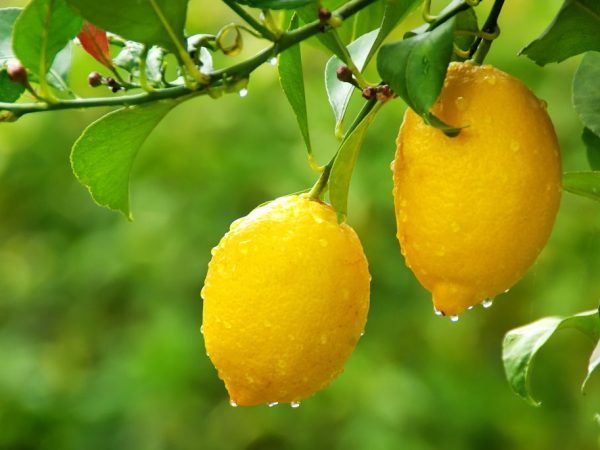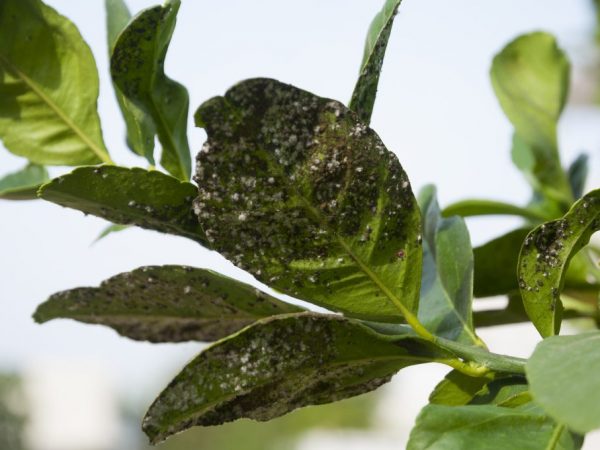Growing lemon Lunario
Cultivation of citrus fruits at home is used both for fruit production and for decorative purposes. Lunario Lemon is a popular variety valued for its annual flowering and good yields.

Growing lemon Lunario
Lemon characteristics
The Lunario lemon variety has a lush crown and beautiful flowering. The variety tolerates diseases well, is unpretentious in care.
The plant is able to bloom and bear fruit at the same time. It develops well in both hot and cool climates. It grows fast and vigorously.
Description of the bush
The Lunario lemon has a tree-like crown that reaches 4.5-6 m in height outdoors and 1-1.5 m indoors. Young shoots of the variety have a greenish tint, the bark and skeletal branches are brown-gray. Leaves are oval, large, with a pointed edge and shortened petioles. Their length reaches 12-14 cm.
The plant has a small number of sharp rings on the branches. Their length and density depend on the age of the plant. Long thorns reach a size of 1.3 cm. The branches are long and elongated, and must be tied to trellises.
The flowers are red-blue and grow at the base of the leaves. Flowering can be either single or in the form of inflorescences. Each flower reaches 4-5 cm in diameter, has a bright and pleasant scent
Description of fruits
According to the description, the Lunario variety has large fruits that reach a weight of 150 g. The plant grown at home produces 10-15 citrus fruits per season, but their ripeness is always different.
The difference between the Lunario variety is the more elongated shape of the fruit, reminiscent of a cucumber. The skin is smooth and not too thick. Ripe fruits are bright yellow. Lemons adhere to the branches of the bushes.
Growing lemon
The Lunario lemon variety is well suited for growing at home. It is unpretentious and immune to many diseases.
Even with indoor cultivation, the variety gives a lot of fruits, the main thing is to provide it with proper care.
Landing in the soil
Planting lemon requires a soil with low acidity and good mineral content. For this, special commercial lemon soil, flower mixture, soil with humus or charcoal are suitable.
A mixture of flower soil and peat is also prepared. Drainage is required for growing from seeds. The soil should be loose and fluffy so that the roots receive moisture and oxygen.
Landing procedure:
- selection of undamaged seeds;
- planting into the soil to a depth of 10 mm;
- covering the soil with a film before germination;
- upon reaching a height of 18-22 cm - transplanting the plant into another container.
Plant care

The plant needs good lighting
When leaving the lemon, Lunario provide good lighting. For this, citrus fruits are grown on windowsills facing south or east. This allows the sun to illuminate the bushes for as long as possible.
Caring for a Lunario lemon also requires maintaining the right temperature. The variety develops better at 17-21 ° C.In warm weather, the plant is taken out to the balcony.
When growing a Lunario lemon, regular inspections of the leaves and branches are required. Temporary movement of the plant to dark rooms helps from yellowing of the foliage. Lemon also needs pruning. Growing in the kitchen is contraindicated: gas from the stove has a bad effect on the fruits.
Fertilizer
Lemon in the first 2-3 years of life is not fed. In the third year, minerals and organic fertilizers are applied.
When feeding lemon Lunario use:
- potash fertilizers;
- ammonium nitrate;
- superphosphate;
- chicken humus;
- humus;
- ash.
Watering
The Lunario variety is undemanding to moisture in the soil, but prefers moist air around the bush. In hot periods, the plant is sprayed every few days. In winter, the procedure is carried out if the plant is close to the batteries. Also, a container with water placed near the pot will maintain moisture.
Lemon watering rules depend on the season:
- In winter, watered every 5-7 days to prevent stagnation of water.
- In the summer, they are watered 2 times a week: this allows the roots to receive moisture in the required amount.
Diseases and pests

The tree is susceptible to pest infestation
Lunario is susceptible to a number of diseases:
- Gommoz. It is manifested by the appearance of cracks in the lower parts of the trunk and a decrease in the flexibility of the branches. Causes decay.
- Root rot. The disease causes the appearance of purulent pathologies on the roots. The symptom is leaf fall.
- Tristeza. Causes the death of the bark.
- Sheet mosaic. Symptom - the appearance of yellow spots on the leaves. The disease affects decorativeness, but does not affect the development of fruits.
Also, citrus fruits are negatively affected by a number of pests, including:
- shield;
- aphid;
- spider mite;
- white mosquitoes.
Fight disease
When gommosis develops, the damaged segments of the plant are removed, the roots are cleaned and transplanted into another container. The trunk is treated with copper sulfate.
When rot appears on the roots, segments with pathologies are removed and the plant is treated with a growth stimulant. A complete replacement of the soil is required. During this period, watering is stopped so as not to cause waterlogging and not to aggravate the disease.
Pest control
To combat insects, special chemicals are used. Spraying it regularly with warm water also helps. Regularly repels insects from the geranium plant.
Also, sulfaride solutions are prepared and the bushes are treated every 5 days. To get rid of aphids, wipe the leaves with a damp cloth. Garlic infusion and acetic acid solution also help from insects.
Prophylaxis
For prevention, carry out:
- cutting off dead cuttings;
- treatment of cuttings with stimulants;
- moistening the soil;
- covering the handle with polyethylene;
- daily spraying.
Conclusion
Lunario lemon is a fruit that is resistant to many diseases. It is distinguished by its productivity and large fruits, due to which its cultivation on the site becomes profitable. The main thing is not to neglect the rules of caring for the plant.

